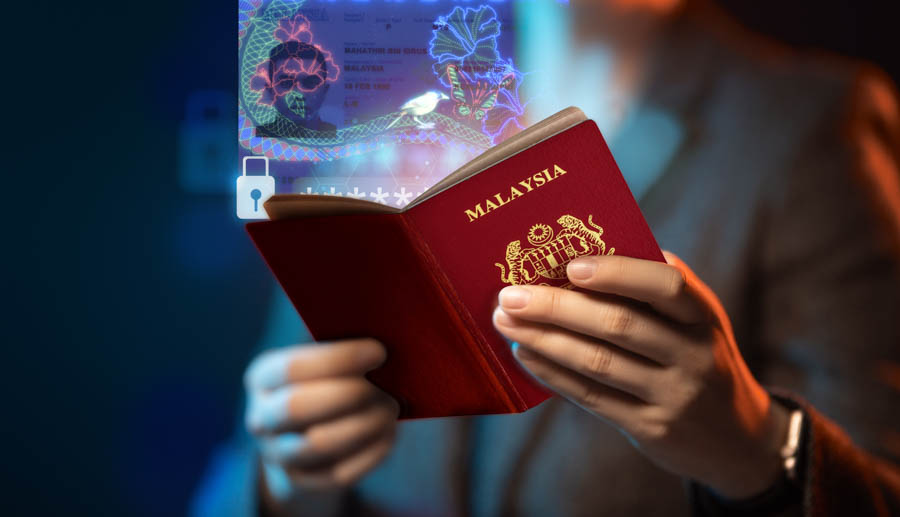Essential Guide to Manual ID Verification Techniques
Verifying official identity documents (ID) is key to preventing identity fraud and security threats. This article breaks down the key steps in manual ID verification, from checking passports and driver’s licenses to spotting security features that confirm authenticity or signal potential fraud. Whether it’s for security professionals or business owners, this article provides practical insights into effective ID verification.
Understanding the Importance of ID Verification
ID verification is a key security measure worldwide, essential for preventing fraud and protecting sensitive information. By authenticating identities, organizations can ensure they engage with legitimate individuals. This process plays a critical role in many industries like banking, healthcare, digital services, and government services. Effective verification helps prevent identity fraud while preserving the integrity of essential operations. Implementing reliable ID verification techniques is also crucial for compliance, such as Know-Your-Customer (KYC) or Anti-Money Laundering (AML) regulations. Failing to adhere to regulations can cause fines, penalties, legal actions, or reputational damage.
What Constitutes an Official ID Document?
An official ID document serves as proof of identity and is typically issued by a government authority. These documents incorporate specific security features to prevent forgery and fraud. It is important to note that an official document will vary from country to country due to local legislation and requirements.
Common types of official ID documents play a vital role in identity verification. Widely recognized examples include:
- Passports
- Driver’s licenses
- National ID cards
- Residence permit
Legal and Compliance Aspects of ID Verification
Understanding legal and compliance requirements in ID verification is crucial, as strict regulations govern these processes. Adhering to them helps prevent legal issues and ensures proper handling of sensitive information. Compliance aligns identity verification with industry standards and national or international regulations, reducing risks for organizations managing personal data.
Many industries follow standards like KYC (Know Your Customer), which outline mandatory verification procedures. Non-compliance can lead to fines and penalties. Proper identity verification also means protecting consumer privacy. Mishandling personal data can result in security breaches, impacting both individuals and organizations. Therefore, complying with data protection regulations is a must.
The Manual ID Verification Process: A Step-by-Step Guide
The manual ID verification process consists of several essential activities. A methodical and diligent approach is crucial for accuracy and security. In summary, this would be the steps:
- Verify the ID bearer’s identity by comparing their appearance to the photo and physical description on the ID.
- Check for counterfeiting by examining security features such as holograms, watermarks, and microprinting.
- Use Ultraviolet (UV) light to assess the base reaction of the document’s substrate, see how it reacts, before inspecting additional UV security features.
- Cross-check Personally Identifiable Information (PII) in the Visual Inspection Zone (VIZ) against the Machine Readable Zone (MRZ).
- Ensure the ID is not expired, as an invalid document cannot be used for identification.
- Inspect for any signs of alteration, such as erasures or overprinting, which may indicate tampering.
Below, we will explain more in-depth about these steps.
Checking Document Integrity, Expiration Dates, and PII.
Begin the verification process by checking the expiration date. An expired document is not valid for authentication, making validity essential for identity confirmation. Next, assess the document’s physical condition. It should be intact, with no tears or visible damage, as any signs of tampering could indicate fraud. Examine the edges for consistency. Authentic IDs have uniform, clean-cut edges, while frayed or irregular edges may suggest alterations. Inspect the laminate covering. It should be clear and undistorted. Any warping or peeling could indicate an attempt to modify the document. Finally, verify the accuracy of the data. You can compare the information on the Visual Inspection Zone (VIZ) with the Machine-Readable Zone (MRZ). Ensure all information is correct and consistent, as discrepancies may signal fraudulent alterations.
Checking Physical Security Features
Checking physical security features is a critical step in ID verification. Use the look, feel, and tilt method to assess authenticity. Look for holograms that shift and change when tilted under light, as well as watermarks that become visible when held up to the light. Feel the document’s surface for raised printing or other tactile security features. Tilt the ID to check for optical variable ink, which changes color depending on the viewing angle. Additionally, use a magnifier to inspect microprinting, a security feature that is difficult to replicate.
There are many other types of security features, and because every secure document in the world has a different set of features, it is a challenge to remember each of them. That is why comparing a document against reference data, such as DocumentChecker is helpful.
Utilizing UV Light for Hidden Features
UV light inspection helps uncover hidden security features in ID documents. Many government-issued IDs contain UV-sensitive elements designed to prevent counterfeiting. These may include invisible patterns, symbols, or text that only appear under ultraviolet light.
Photo & Physical Description Analysis
Start by comparing the photo on the ID with the individual. The resemblance should be clear, as any significant mismatch may indicate identity theft. Next, review the physical description listed on the document, some countries or states include this information. Details such as height, eye color, and age should align with the person presenting the ID. Also compare the eyes, nose, mouth, and ear shape. Finally, consider natural changes over time. Aging or medical conditions can alter appearance, so applying reasonable judgment is important.
Training and Common Mistakes in Manual ID Verification
Proper training for staff handling ID verification is essential, ensuring they have the knowledge and skills to detect fraudulent documents. A lack of expertise often leads to common mistakes, such as overlooking small security features. Training equips staff with the necessary skills, but maintaining up-to-date knowledge of document security features is critical for effective verification.
Handling Suspected Fraudulent IDs
If a fraudulent ID is suspected, prompt and careful action is necessary. Start by documenting the concern and temporarily withholding services until verification is complete. Next, seek a supervisor or expert for a secondary review to ensure an accurate assessment and appropriate response. Organizations should follow their internal compliance policies and incident response guidelines when handling suspected fraudulent IDs. These may include escalation procedures, reporting to authorities, or additional verification steps specific to the industry or jurisdiction.
The Role of Technology in ID Verification
As technology advances, ID verification is becoming more sophisticated, with AI and machine learning enhancing accuracy and efficiency. However, manual verification remains essential for thoroughness. A balanced approach that combines technology with human oversight ensures stronger identity verification, effectively reducing fraud risks.
To improve manual ID verification, consider using Keesing DocumentChecker, a trusted global ID document reference database. Its advanced features enable quick and accurate authentication, strengthening fraud prevention. Additionally, Keesing’s ID Academy offers an E-learning course to enhance verification skills, providing in-depth training on detecting fraudulent documents.
Optimize your verification process by registering for a demo account today and experience the benefits firsthand.
Enhancing Manual ID Verification
To improve manual ID verification, consider using Keesing DocumentChecker, a trusted global ID document reference database. Its advanced features enable quick and accurate authentication, strengthening fraud prevention. Additionally, Keesing ID Academy offers an eLearning course, as well as onsite beginner and advanced training, to enhance verification skills with in-depth instruction on detecting fraudulent documents.

